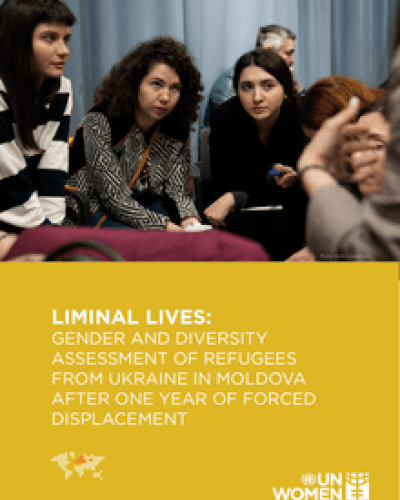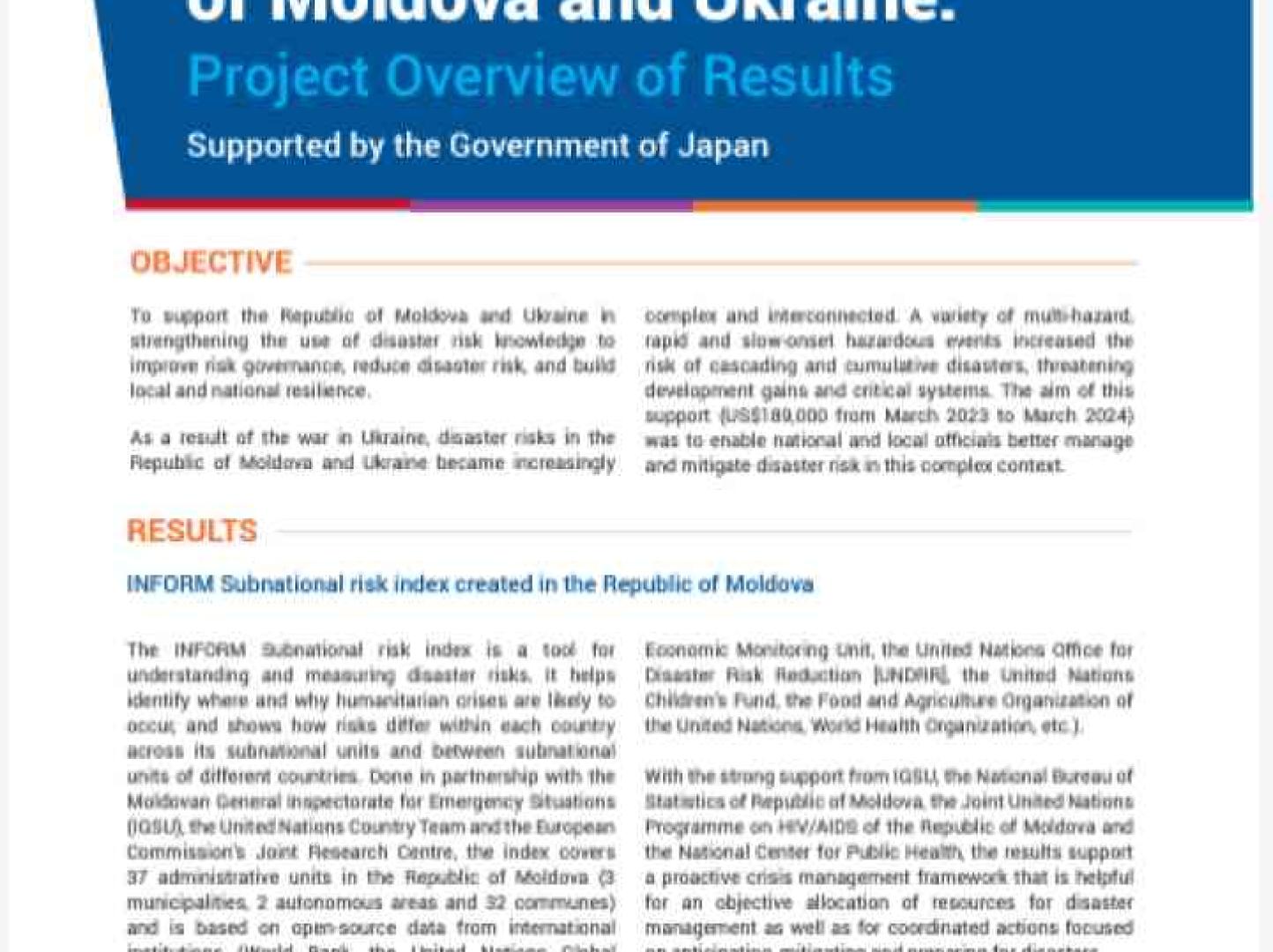Liminal Lives: Gender and Diversity Assessment of Refugees From Ukraine in Moldova After One Year of Forced Displacement

The majority of refugees from Ukraine have been living in Moldova for over 12 months hoping for an end to the war in Ukraine, so they can safely return home. However, as the significant escalation of hostilities following Russia’s invasion of Ukraine in February 2022 shows no sign of abating, attention is turning to how to better strengthen the social and economic integration and resilience of the refugee population in Moldova.
The specific demographics of refugees from Ukraine include a high percentage of women, children and older persons, a fact shaped by Ukrainian legislation which restricts men eligible for military conscription from leaving the country. This demographic composition has had an impact on traditional gender roles and division of labour in refugee households. Furthermore, refugees from Ukraine are not a homogeneous group but have distinct needs, priorities and capacities based on their gender, age and other diversity factors. While all refugees face risks during conflict and displacement, particular at-risk groups may face intersecting forms of discrimination, marginalisation, and increased protection risks. These include older persons (age 65+), people with disabilities, Roma individuals, single women, children, LGBTQIA+ persons, and single women-headed households with many children who are rendered more vulnerable because of family separation and limited financial and material resources.
In order to better understand these differences and their implications for programming, UN Women commissioned a gender assessment to examine the distinct needs, priorities and capacities of diverse groups of refugee women, men, girls and boys from Ukraine living in Moldova, one year after the start of the crisis, and to identify gender and diversity specific considerations for planning sector and intersectoral responses.
Key Findings
• Traditional gender roles have been impacted by displacement and the demographic composition of the refugee population, with refugee women shouldering greater caregiving responsibilities, single women with children taking on nontraditional responsibilities of head of household and primary income earner, and adult male refugees losing their traditional male role of provider and protector. Traditional age-specific roles have also been affected with older people losing their independence, adolescent boys attempting to help their mothers by taking on male head of household roles, and adolescent girls stepping in to support mothers’ additional caregiving burdens.
• A large majority of refugees reported feeling safe in Moldova and believe that in general relations are positive between them and host communities. That said, most refugees intend to return to Ukraine permanently as soon as it is safe to do so, with more older persons and Roma individuals planning to return in the coming year than other groups. Several refugee respondents, including those with young children said that both safety and basic infrastructure were important for them to be able to return to Ukraine and rebuild their lives.
• The uncertainty about the length of the war in Ukraine combined with the hope of return has contributed to a state of liminality, making it difficult for families to plan long-term. This has impacted livelihood, education, and social integration indicators.
• As the international armed conflict moves into its second year, refugees are under increased pressure to secure more sustainable income and employment in Moldova. Single women-headed households with many care responsibilities, Roma women, older persons, and people with disabilities face distinct barriers to employment including lack of flexible work, lack of chil dcare, language barriers, lack of job opportunities, a mismatch between skills and available jobs and lack of information about employment options.
• Given the large proportion of women and children, humanitarian programmes have specifically targeted women and girls. Refugee men have, however, inadvertently been marginalised from some assistance programmes, in particular livelihood opportunities and MHPSS.
• Roma refugees may face discrimination because of their ethnicity, linked to the discrimination they faced in both Ukraine and Moldova prior to the crisis. Roma refugee women face compounded discrimination by virtue of their gender and ethnicity. This has implications including for access to housing and livelihoods.
• Sexual exploitation and abuse (SEA) remain a concern, as refugees stay longer in Moldova and risk increased vulnerability, as their resources dwindle, and as medium-term housing and livelihood solutions must be found. Those most at risk include single refugee women with children who have limited resources and are more dependent on RACs or host families for shelter. • Despite signs of psychosocial distress and the need for MHPSS support, very few refugees reached out for relevant mental health services during the first months of the crisis. In recent months, this is starting to change with more refugees seeking counselling. There is a risk of excluding men and boys in such programmes, given the targeted focus on women and girls and the lack of gender parity among MHPSS.
• The extent to which refugees and host communities participate and/or are consulted in humanitarian planning and monitoring varies. Underrepresented groups include Roma people, people with disabilities, older people, LGBTQIA+ persons, people living in rural areas, and host communities, who tend to be less visible in general assessments and reports, limiting an understanding of their needs and priorities.








